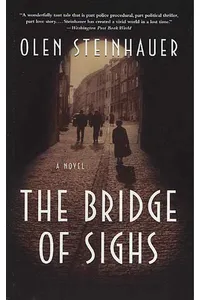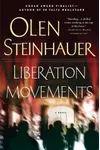Step into the shadowy world of the Ruthenia Quintet, where Cold War intrigue and moral dilemmas collide in a fictional Eastern European nation! Penned by Olen Steinhauer, this gripping five-book spy fiction series, published between 2003 and 2007, transports readers to the gritty heart of Communist-era Europe. With its blend of historical grit, complex characters, and pulse-pounding suspense, it’s a must-read for fans of espionage thrillers.
Unlike typical spy novels, the Ruthenia Quintet doesn’t glorify the cloak-and-dagger life. Instead, it dives deep into the psychological toll of living under oppressive regimes, making every decision a high-stakes gamble. Ready to unravel secrets alongside conflicted detectives and spies? Let’s explore this captivating series!
How Ruthenia Quintet Began
Olen Steinhauer, an American author with a knack for spy fiction, drew inspiration for the Ruthenia Quintet from his time in Eastern Europe, including a year in Romania on a Fulbright grant. His experiences immersed him in the region’s complex history, sparking the idea for a series set in a fictional nation resembling Slovakia or Hungary. Launched in 2003 with The Bridge of Sighs, the series chronicles the evolution of a Communist state from 1948 to 1989, blending historical accuracy with thrilling narratives.
Steinhauer’s goal was to capture the human side of espionage, focusing on ordinary people caught in extraordinary circumstances. His meticulous research and knack for morally ambiguous characters set the stage for a series that’s as thought-provoking as it is entertaining.
The Heart of Ruthenia Quintet
The Ruthenia Quintet spans five decades, with each book focusing on a different protagonist and era. The Bridge of Sighs (2003) introduces Emil Brod, a 22-year-old homicide detective in 1948, navigating a murder case amidst post-WWII chaos. The Confession (1956) follows Ferenc Kolyeszar, a disillusioned inspector grappling with political oppression. 36 Yalta Boulevard (1966) centers on Brano Sev, a secretive state security officer whose loyalty is tested. Liberation Movements (1975) weaves a complex tale of terrorism and betrayal, while Victory Square (1989) brings Emil Brod back as a retiring chief facing the fall of communism.
The series’ themes—loyalty, betrayal, and the cost of ideology—resonate deeply. Steinhauer’s unnamed nation, with its rubble-strewn streets and paranoid atmosphere, feels vividly real, reflecting the Cold War’s tension. His style combines police procedurals with political thrillers, creating a slow-burn suspense that keeps readers guessing. Each book stands alone yet interweaves characters, rewarding fans who read in order.
Why Ruthenia Quintet Resonates
The Ruthenia Quintet has earned critical acclaim, including two Edgar Award nominations, for its nuanced take on spy fiction. Fans praise its atmospheric depth and complex characters, who grapple with ethical dilemmas that mirror real-world struggles. By grounding espionage in historical context, Steinhauer offers a fresh perspective, appealing to readers who crave substance alongside thrills.
Its lasting appeal lies in its humanity. The series doesn’t just tell spy stories; it explores the toll of living in a world where trust is a luxury. As modern readers revisit Cold War themes, the Quintet remains a compelling lens on power, sacrifice, and resilience.
- Publication Years: 2003–2007
- Number of Books: 5
- Awards: Nominated for Edgar, Anthony, and Macavity Awards
- Setting: Fictional Eastern European nation, 1948–1989
Grab The Bridge of Sighs and dive into the Ruthenia Quintet’s shadowy world of spies, secrets, and suspense!



